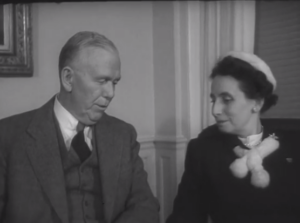 Recent headlines include “10th Mountain Division Gets First Female Brigadier,” “Two women graduate from Army Ranger Course,” and “Navy SEALs set to open to women, top admiral says.”
Recent headlines include “10th Mountain Division Gets First Female Brigadier,” “Two women graduate from Army Ranger Course,” and “Navy SEALs set to open to women, top admiral says.”
What, if anything, does this have to do with George C. Marshall?
Marshall’s concern for women in uniform was the impetus behind the federal organization that still exists. Secretary of Defense Marshall and Assistant Secretary of Defense Anna Rosenberg formed DACOWITS, or the Defense Advisory Committee on Women in the Services, in 1951 to provide advice and recommendations on matters and policies relating to the recruitment and retention, treatment, employment, integration, and well-being of highly qualified professional women in the Armed Forces.
- Marshall and Rosenberg gathered a group of 50 women from across the United States to discuss women in the military. They wanted to understand how to best recruit and utilize women in national defense. The women of that meeting became the first members of DACOWITS, and Marshall charged them with advising the Department of Defense on how to best recruit, retain, and utilize women. DACOWITS members were women of influence in their own communities, highly respected for their work in civic organizations and the private employment sector. Marshall and Rosenberg hoped that members would use their standing in their communities to convince Americans that military service offered young women a respectable, important career with many benefits, including equal pay. (An Encyclopedia of American Women at War, pg. 184)
Former committee members include industrial engineer Dr. Lillian Gilbreth of Cheaper by the Dozen, Col. Ruth Cheney Streeter who directed women Marines in WWII, civil rights activist Dorothy Height, advice columnist Ann Landers, and U.S. Supreme Court Justice Sandra Day O’Connor.
Over the years DACOWITS has addressed many concerns of female military members. In the 1950s it included improving housing, training, and expanding access to healthier foods in military mess halls. In the 1960s the committee succeeded in removing rank limitations that prohibited women officers from being promoted above the rank of lieutenant colonel or lieutenant commander. The 1970s saw an increase in ensuring service women’s equal opportunity for higher education in the military academies like West Point, the Naval Academy and the Air Force Academy.
With the disestablishment of WAC in 1978, and the total integration of women into the military, DACOWITS opened its membership to men. In 1980 they recommended that the President give priority to the consideration of the appointment of women as judges of the United States Court of Military Appeals.
In the early 1990s DACOWITS members recommended that the Chief of Staff of the Army fully integrate women into all ceremonial units, which included the Tomb of the Unknowns and they successfully campaigned to repeal laws prohibiting women from serving in combat.
Marshall’s legacy, to ensure that every American who wanted to serve should have the opportunity, is alive and well today with Col. Diana Holland, 10th Mountain Division deputy commander for support, Captain Kristen Griest and 1st Lt. Shaye Haver, the first women to wear Army Ranger tabs, and the future enrollees in the Navy SEAL program.
[button color=”” link=”https://www.marshallfoundation.org/support/” new_window=”yes”]If you like what you’ve read, consider becoming a member![/button]
